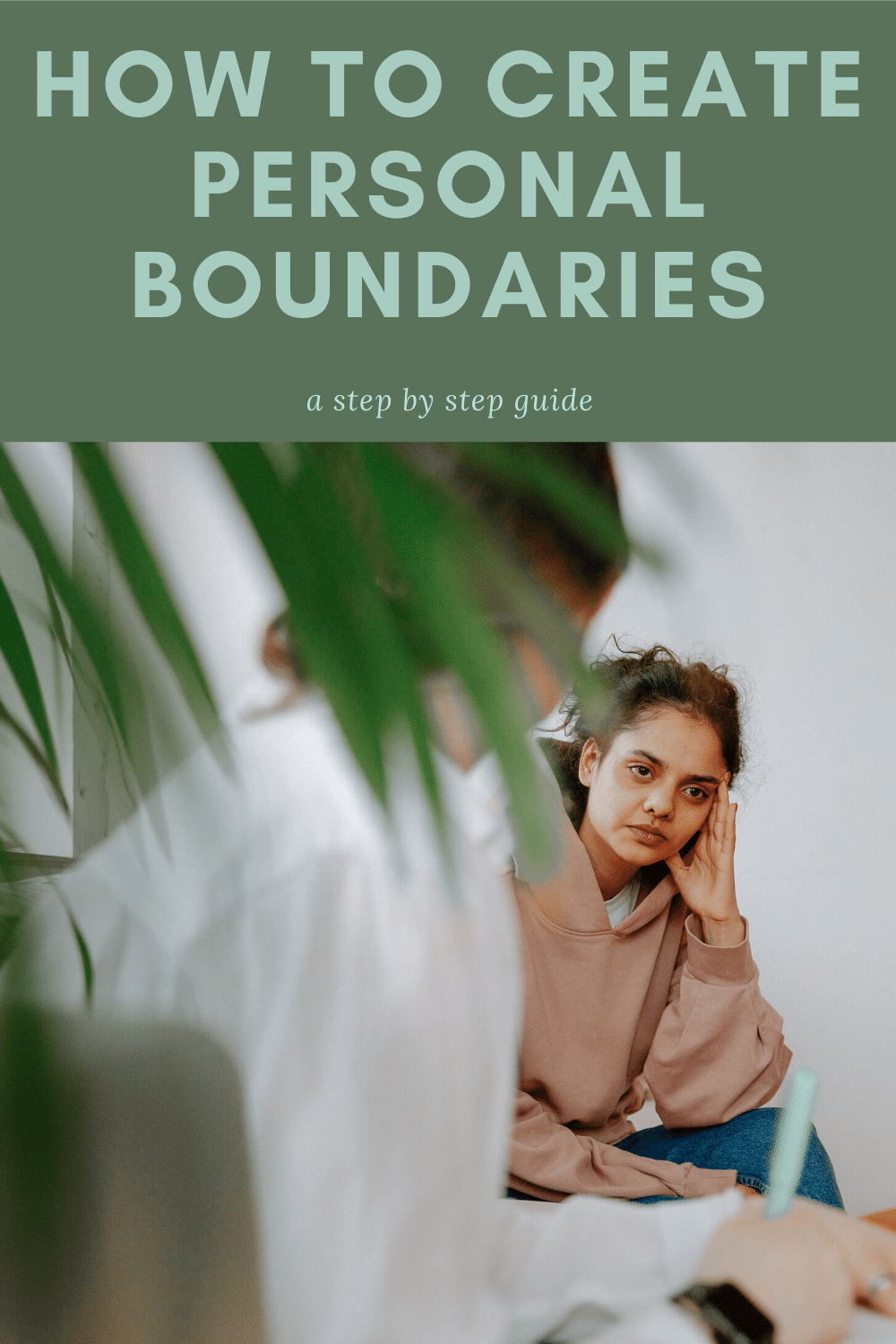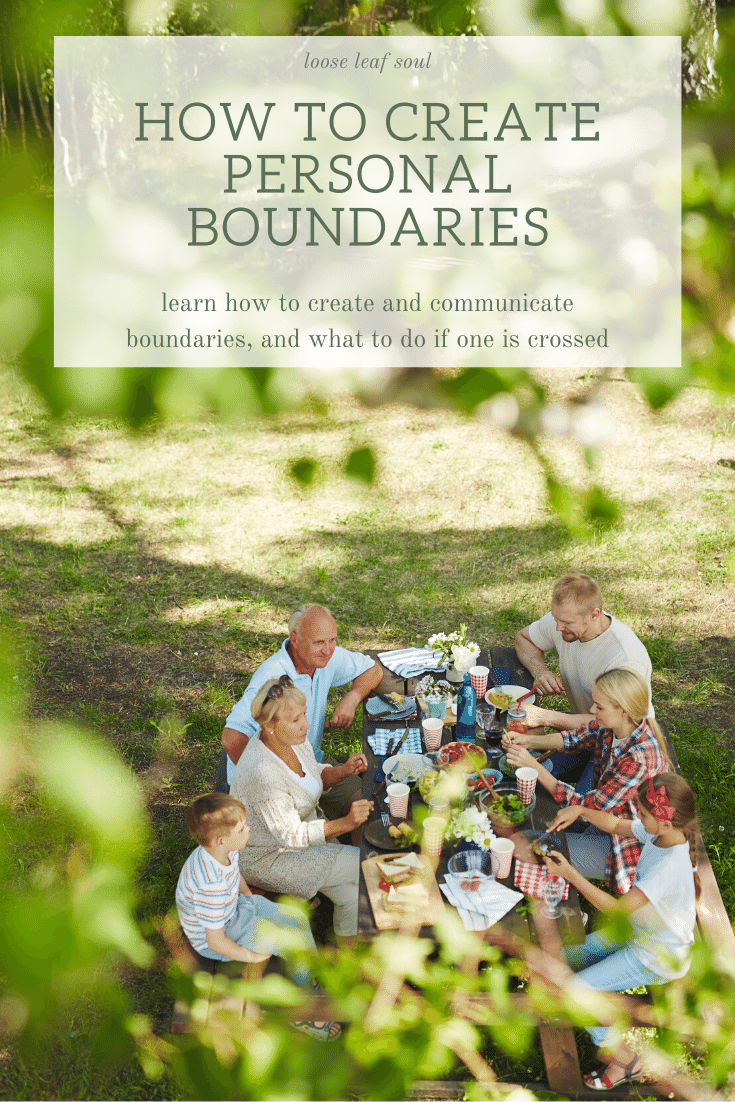how to create personal boundaries.
when i asked y’all on my instagram (@looseleafsoul) what blog post y’all would like to see next on the blog, and overwhelming amount of you wanted a guide to creating boundaries. this is a topic near to my heart and something i am soooo glad to deliver!
human connection is essential, and family is important to many people. they are one of the first sources of deep trust.
that being said, many of us have challenging relationships with our families or friends. we may not get along well with everyone we spend time with, and it can be difficult, upsetting, or triggering to be put in certain situations where you don’t feel safe and respected.
this is why personal boundaries are so important. boundaries allow us to set standards of how we are treated and become clear about our needs during difficult times.
creating boundaries is hard, especially for our spiritual brothers and sisters. inner work can make you more sensitive to your external world, and the thought that you might upset someone is hard. remind yourself that your basic needs are important.
this guide is to help you understand your needs and how to state them clearly in difficult situations. once you’re done creating your boundaries, it might be a good idea to send a link to this post to your family and friends so they can understand your new boundaries and even create some themselves!
get clear on what boundaries you need.
deciding what boundaries need to be set can be difficult, especially if you struggle with people pleasing (me too my dude).
when i find that a new boundary needs to be set in place, i set down and journal about what made me uncomfortable, unhappy or triggered in that situation, and how it could have been avoided. i then give it a name, and i write a phrase i can say when i need to address the new boundary to someone else.
some examples of common boundaries:
-time boundaries. i.e. deciding how often to see your family and for how long.
-alone time boundaries, i.e. deciding to take alone time during gatherings
-food boundaries, i.e. deciding what you will and will not eat
-touch boundaries, i.e. deciding not to hug/kiss/touch someone.
-conversation boundaries, i.e. what topics are off limits for conversation.
there are a lot more kinds of boundaries. i love this article from psych central that goes into most of the kinds of boundaries that exist, why we struggle to make boundaries, and how to keep firm on what we need.
boundaries are not the same has difficult situations. getting in an argument is noth the same has having your boundaries crossed. when creating boundaries, think about what you genuinely need to feel safe and respected, not just overly comfortable.
communicate your boundaries calmly and clearly.
this is the hardest step for most people. stating your boundaries can be challenging, especially if you are expecting someone to be upset. using the phrase you wrote down in the last step can help you stay calm, as well as state your boundary clearly.
examples of clear statements of boundaries:
- i will be leaving by 7 tonight.
-i’m going to go take a walk by myself.
- i’m no longer drinking alcohol so i will not be drinking champagne.
- nice to see you! i’m not giving out hugs today.
- i won’t be joining conversations about politics.
notice that none of these phrases have an apology. you do not need to apologize for your boundaries. these are the very basics of what you need to have an enjoyable time.
it is not necessary to provide a reason for your boundaries, but it can help others be more understanding of your needs. if you do decide to give a reason, keep it calm and non-confrontational. saying “i need a little bit of alone time” is less aggressive than “you are making me angry and i have to get away to calm down”.
don’t be manipulated into drawing back your boundaries.
there may be people in your life that do not understand personal boundaries, and they may get upset. this is not your fault. this is a reflection of their inner world, and often their lack of personal boundaries themselves. it is not your job to soothe them by taking back your stated needs.
if someone does get upset, you may choose to apologize that they are upset, but do not apologize for stating your boundaries. “i am sorry you’re upset, but these are the boundaries i need to enjoy my day and feel safe” is a great way to state this.
if someone adamantly says no to respecting your boundaries, it is 100% okay to remove yourself from that situation, maybe just for a few minutes or for the whole day. if your basic needs are not respected, you are not being respected and have every right to walk away and not engage.
if a boundary is crossed, do self care and then address it if you can.
if a boundary is crossed, you may feel triggered and uncomfortable. it is hard to stay calm and have a clear conversation in that mindset. you are allowed to remove yourself from that situation without giving a reason.
the first step when a boundary is crossed is self care. do what you need to do in order to preserve your wellbeing. this may include leaving and going somewhere where you feel safe, meditating, journaling about the situation, crying, or anything that makes you feel better.
after self care, you have the choice to address the situation if you wish. it is best to do this calmly and clearly.
a good example of this is, “my boundary about ______ was crossed after i clearly stated my wishes and needs. i feel ______. in the future, i would like ________ or i will have to excuse myself from these kinds of gatherings”.
this can either be an in person conversation or sent over text or as a phone call, whatever preserves your peace.
i hope this guide helps you create healthy boundaries!








